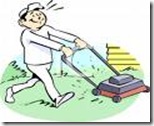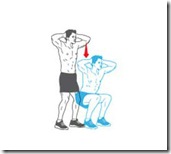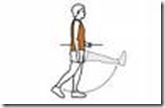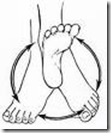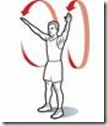The nice weather and a look in my own back yard got me thinking that it was time to get into the garden and start cleaning up. I would think most people here in my home town of Victoria would have already started their spring gardening or like me are thinking about the outside chores that need to be done. So, that brings up the topic of today's newsletter – the hazards associated with the extreme sport of gardening.
Most people would never think that gardening is a hazard and I am sure no one ever thinks about preparing for a gardening session or warming up. Just as most golfers (at least recreational golfers) never think about the need to warm up or prepare for their round of golf, most gardeners never give it a thought as well. But, it is important to prepare. It never fails that as soon as the weather warms up and people are headed outdoors, the gardening injuries start. Just as in the winter with the white stuff (snow), there is a rash of back, shoulder or wrist injuries.
I think for the most part, clients here at our facility are better prepared that the average person that isn't fit and in shape. But, even our clients should take just a few minutes to warm up and prepare. After all, no one ever starts their workout in the gym without going through a structured warm up. Gardening is exercise. Think of the movements associated with gardening – walking, bending, lifting, turning, twisting, lunge movements, squat movements. All these movements are typical of an exercise session in the gym, so why not spend a few minutes doing a little warm up. Chances are you will be less stiff when you start and it will go a long way to preventing injuries.
A little warm-up that you could do at home just prior to picking up those gardening tools:
Ankle Circles – 10 each direction on each foot.
Leg Swings – Swing leg front to back and then side to side. 10 each direction on each leg.
Squats – 12 body weight squats. Maintain a nice straight back; go only as low as comfortable. Stance should be just outside shoulder width.
Arm Swings – giant arm swings – move through as full range of motion as possible and pain free. 10 swings in each direction.
These few warm ups will take about 5 minutes to do and will just help prepare your body for the job ahead. Remember to use good body mechanics as well. If you must lift, lift from the hips and not bent over at the back.
Remember that gardening is exercise and if you spend 8 hours in the garden you will most likely feel some sore muscles the next day. If you have had a long day gardening, a hot bath with epsom salts, a session with your foam roller if you have one, will go a long way to alleviating some of the aches you may feel the next day. Now you are ready to take on the back yard. Enjoy.
Till next time,
Narina
"Monitoring, Mentoring, Motivation"
